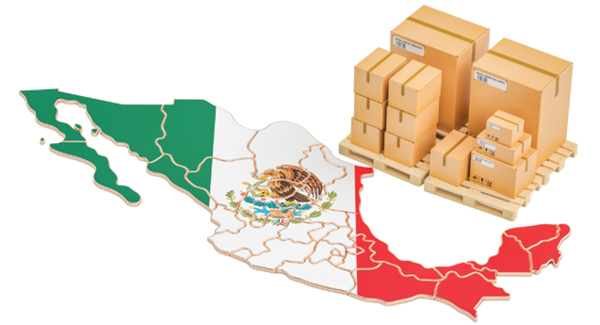How to Use Expedited Service For Painless Shipping to Mexico

Cross-border regulations, varying border operating hours, and differing procedures for import and export may complicate shipping to Mexico.
As the second-largest economy in Latin America, Mexico has long been a destination for economic opportunity. For U.S. companies, cross-border regulations, varying border operating hours, and differing procedures for both import and export may complicate shipping and cause significant supply chain delays.
One way to manage the complexity is by using an expedited carrier. With expedited service, it is not only the speed of the service but also the level of communication that is provided that can simplify the process of moving goods in either direction.
Expedited shipping isn’t just for emergencies anymore. Many companies use an expedite carrier simply to ensure precise delivery requirements are met, or premium communication is provided. Expedited shipping means less handling and greater oversight for each step of the shipment. Services are available in a range of truck sizes as well as air freight.
Crossing goods in and out of Mexico can be a confusing and sometimes frustrating ordeal, so it is essential to use experienced carriers that can manage the process in a timely fashion.
Utilizing carriers that voluntarily participate in the Customs Trade Partnership Against Terrorism (C-TPAT) program with U.S. Customs and Border Protection provides an advantage, as they are less likely to be examined at U.S. ports of entry.
Standard truck freight bound for Mexico typically involves multiple lengthy steps. Once all the correct documents are obtained, a freight forwarder works with a Mexican customs broker to prepare the shipment to cross the border. The forwarder inspects the load to ensure correct quantity and description, and completes customs documentation.
Once this has been completed, and the consignee pays the duties in Mexico, the forwarder hires a local drayage company. The drayage company then moves the shipment over the border and through customs clearance. Once at the dray yard in Mexico, it is common that another carrier then completes the shipment. It is not uncommon for this process to take days, or even weeks, should any bit of information be missing, or an inexperienced carrier is not well versed in remedying these situations.
This process is much more streamlined when using an expedite carrier, as many of them will already have direct relationships with Mexican customs brokers and are set up to have their shipments receive preferential treatment to be processed due to the time-critical nature of their usual shipments. Also, there is often not another carrier involved for the drayage, as the expedite carrier itself will cross and deliver the goods to their final destination in Mexico.
Before you ship to or from Mexico, ensure you are working with an experienced trans-border carrier that can manage the complexities involved with this important trade partner south of the border.
Know Your Mexican Customs Documents
Shippers must understand customs requirements for goods moving into Mexico.
- Pedimento de importación: The basic Mexican import/export document that must be completed for all commercial crossings.
- Prefile: The document required for entry into the United States from Mexico.
- Carta de Instrucciones: A form that contains all the information for all parties involved to be on the same page.
- Commercial invoice (in Spanish).
- Bill of lading
- Guarantee of payment of additional duties for undervalued goods (see Customs Valuation) if applicable.
- Documents demonstrating compliance with Mexican product safety and performance regulations if applicable.
- NAFTA Certificate of Origin for products qualifying as North American to receive preferential treatment. The exporter can complete this document, and it does not have to be validated or formalized.
